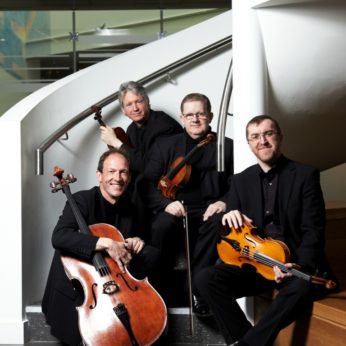Despite his famously cantankerous temperament and his refusal to conform to society’s code of behaviour, Beethoven was remarkably successful with his patrons. From his earliest days in Vienna he was seen as Mozart’s successor, an impression reinforced by the fact that he had Haydn as his teacher. The list of subscribers to his Op.1 piano trios, published in 1795, included most of the aristocratic music-lovers of Vienna. He was generously supported for much of his life by the Archduke Rudolf, with the assistance of Princes Lobkowitz and Kinsky, and there were famous commissions by Prince Golitzin and Count Razumovsky. Much of this patronage derived from the civilised involvement of the Viennese aristocracy in music-making. Count Razumovsky, the Russian Ambassador to the Emperor’s Court, played second fiddle in his renowned in-house quartet, which was led by Ignaz Schuppanzigh, who had the distinction of premiering quartets by Haydn, Mozart, Beethoven and Schubert. So it was natural for him to commission a set of three quartets from Vienna’s most prestigious composer, with the stipulation that each work should have a Russian theme.
To obtain his Russian themes, Beethoven used a collection of Russian folksongs that had been published in 1790. He borrowed two melodies from this collection, transposing them to suitable keys. For the F major quartet, Beethoven saves the Russian folk-tune for the last movement, and opens the quartet with one of his most memorable themes, which dominates the entire movement with its aura of majestic calm. First heard in the cello, it is passed mid-theme to the first violin and held together with pulsating inner voices of static harmony but suppressed energy. Most of the ideas heard during the exposition, except only the short, lyrical second subject, are derived from this powerful theme. Appropriately the vast development, which opens trickily by pretending to be a formal exposition repeat, is devoted to it and its associated ideas, the tension never slackening for a moment. And its full-throated return in the recapitulation is prepared with great dramatic flair.
The B-flat scherzo is unique with its extended sonata form, no trio and unbridled wit. The opening tapping motif pervades the movement in various guises with its hypnotic rhythm. There is a contrasting second subject group in F minor, but as in the first movement, the development is concerned with the staccato ideas from the opening. The mood changes are bewildering – one minute tender, the next raucously boisterous.
The F minor largo transports us to that passionate but remote inner world of Beethoven’s, where the ecstatic beauty of the music both calms and inspires us. It was in the sketches for this movement that Beethoven makes his puzzling note about a weeping willow or acacia on the grave of my brother. He began the quartet just after attending his brother Caspar Carl’s wedding, which may have brought back thoughts of his two brothers who died in infancy. Cadenza-like runs lead without a break to the finale with its Russian folk-tune, which was originally a slow, sad tune, but in Beethoven’s hands is cheekily turned into a wild dance, probably to the initial confusion of Count Razumovsky. He would, however, have enjoyed the joke in the coda, when the tune is briefly given at its correct tempo as if to show that the faster tempo is, of course, much more fun.
